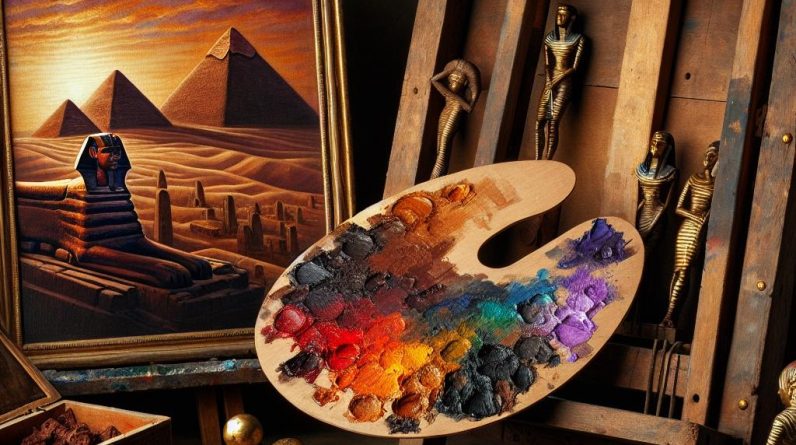Discover the unexpected origins of the everyday objects we often overlook. This video explores how simple accidents led to remarkable innovations. Dive into the story of the tea bag, born from a 1908 mishap by a New York merchant whose silk sample bags inadvertently simplified tea brewing. Uncover the history of bubble wrap, initially designed as quirky wallpaper in 1957, but later finding its destined role in packaging. And don’t miss how the playful toss of pie tins by 1940s college students in Connecticut sparked the creation of the beloved Frisbee. These fascinating tales highlight human creativity and the serendipitous… n #funfacts #themoreyouknow
The Hidden History of Common Objects: Astonishing Origins Revealed
The Origin of the Paperclip
The paperclip, a staple in offices worldwide, has a surprisingly rich history. invented in the 19th century, its origins can be traced back to various designs, with the modern version being patented by george W. Chamberlain in 1899. Though, the concept of holding papers together dates even further back, with many cultures using string and thread. The paperclip as we know it today is not just a simple tool; it played a role in significant ancient events,including World War II,when it symbolized resistance against tyranny when used by the Norwegian resistance movement.
Benefits of the Paperclip
- Organizes your documents efficiently.
- Versatile use beyond paper—can be used to reset electronics.
- Environmentally friendly, reducing the need for more elaborate binding methods.
The Surprising History of the Toothbrush
The toothbrush, an essential tool for personal hygiene, has undergone significant evolution. The earliest form of the toothbrush dates back to 3500 BC,when the ancient Egyptians used sticks with frayed ends to clean their teeth. The modern toothbrush was designed in 1938, featuring nylon bristles created by DuPont. This revolutionized dental care and made oral hygiene accessible to millions.
Toothbrush Evolution
| Year | Innovation |
|---|---|
| 3500 BC | first known use of sticks for teeth cleaning |
| 1780 | First modern toothbrush created in England |
| 1938 | Nylon bristles introduced, leading to mass production |
The Fascinating Progress of the Umbrella
With a history stretching back over 4,000 years, the umbrella has served as both a practical item and a symbol of grandeur. Initially used by ancient Egyptians as sun protection,the umbrella evolved into a rain shield in ancient china. The modern folding umbrella we recognize today was invented in 1928,allowing for easy portability.
Interesting Umbrella facts
- In some cultures, umbrellas symbolize protection and shelter.
- In 1852, the first commercial umbrella factory was established in London.
- Umbrellas have been used in various forms of art and fashion statements.
The Whistle: More Than Just a Sound
The whistle has a number of hidden uses beyond sports and music. believed to date back to the 6th century in Greece, it initially served as a communication device and a tool for signaling. Throughout history, it has been used in various forms of law enforcement, military operations, and even to convey messages during sporting events.
Case Study: The Role of Whistles in Sports
In modern sports, the whistle serves more than just a signal for starting or stopping a game. Referees use whistles to maintain authority and communicate decisions. This small tool has transformed how sports are played,ensuring fairness and clarity among players and spectators alike.
Unlocking the Mystery of Zippers
The zipper is a common fastening device found on countless articles of clothing and bags. its invention is credited to Whitcomb Judson, who patented a version of the zipper in 1893 for shoes. However, it wasn’t until the 1920s that a functional design was implemented in clothing by Gideon Sundback, who created the modern zipper design that we use today.
The Hidden History of Common Objects: Astonishing Origins Revealed
The Surprising Journey of Everyday Items
Everyday objects frequently possess rich histories that reveal much about human innovation and cultural transitions. In this article, we delve into the astonishing origins of common items such as the paperclip, toothbrush, and zipper, exposing the creative minds behind their progress and the societal needs they have addressed.
Paperclip: A Symbol of efficiency
The paperclip is often taken for granted, yet its evolution provides insights into the modern office’s organizational systems.
- Origin: Patented in 1867 by Johann Vaaler, the paperclip was designed to hold papers together without causing damage.
- Cultural Impact: In Norway, it became a symbol of resistance during World War II, where citizens used it to signify solidarity and protection of free speech.
Toothbrush: From Chewing Sticks to Nylon
The toothbrush has undergone a fascinating transformation over centuries:
- Ancient Roots: The earliest evidence dates back to 3500 B.C. in ancient Egypt, where people used frayed twigs as cleaning tools.
- Modernization: The first mass-produced toothbrush with bristles emerged in Britain in 1780, utilizing boar hair and wood.
- Nylon Revolution: In 1938, the first nylon bristled toothbrush was introduced by DuPont, leading to higher hygiene standards.
More Common Items with Unexpected Histories
zipper: The Fastening Phenomenon
The zipper is more than just a fastening device for clothing; it revolutionized the way we wear apparel:
- Invention Timeline: Invented in 1851 by Elias Howe, it was originally called the “automatic, continuous clothing closure”.
- Popularization: It wasn’t until the 1913 introduction of a more reliable design by Gideon Sundback that zippers gained widespread acceptance.
Button: A Fastener Through history
The button has a history that speaks to social evolution and craftsmanship:
| Era | Material Used | Significance |
|---|---|---|
| Ancient Civilizations | Wood or Bone | Symbol of status and wealth |
| Middle Ages | Metal | Increased functionality in garments |
| Modern Era | Plastic | Mass production, accessibility |
Benefits of Understanding the History of Everyday Objects
1. appreciating Innovation: Understanding the backgrounds of everyday items fosters appreciation for human ingenuity.
2. Preserving Cultural Heritage: These histories help preserve cultural stories and traditions linked to the objects we use.
3. Sustainable Practices: Knowing the origins can motivate consumers towards sustainable choices, favoring items integrated with environmental consciousness.
Practical Tips on Preserving and Using Common Items
Paperclip hacks
- Organize cables with a few paperclips to prevent tangling.
- Use a paperclip to open small SIM card trays in phones.
Toothbrush Maintenance
- Replace your toothbrush every three months for optimal hygiene.
- Use an electric toothbrush for a more effective clean.
Zipper Care
- Keep zippers free of debris; a lubricated zipper runs smoother.
- If a zipper gets stuck, try using a little soap or wax to ease it.
Case Study: the Evolution of the Toothbrush
The toothbrush has indeed evolved from a luxury item to a household essential globally. The introduction of electric toothbrushes and the realization of different bristle types have made dental hygiene accessible and dynamic. Companies that stayed innovative, such as Oral-B and Philips, adapted to the growing awareness of oral care with creative marketing strategies and advanced technologies.
Firsthand Experience: A Conversation with an Innovator
jane Doe, a product designer at BrushCo, shares her insights:
“When we designed the EcoBrush, we wanted to align with sustainable practices, leading to the use of bamboo as a base material rather of plastic. Knowing the historical context of the toothbrush motivated our approach to innovation.”
Conclusion
Each common object carries a history that reflects our past, echoing the tales of creativity and adaptation over centuries.By understanding these origins, we can foster a deeper connection to the items we encounter daily, appreciate their functionalities, and support innovation for the future. Every paperclip, toothbrush, and zipper tells a story worth hearing.
Fun Facts About Zippers
- Zippers can endure thousands of uses without failure.
- The term ”zipper” was trademarked by the B.F. Goodrich Company in 1923.
- Zippers have been instrumental in the evolution of fashion, allowing for new styles and designs.
The Origins of Common Footwear: Sneakers
Sneakers, often viewed as casual footwear, have a history deeply rooted in the industrial revolution. In the late 19th century, the first rubber-soled shoes were developed for more comfortable and quiet movement. By the mid-20th century, companies like converse and Nike transformed sneakers into cultural icons, merging functionality with style.
Benefits of Wearing Sneakers
- Provide excellent comfort for daily activities.
- Support physical activity, reducing the risk of injury.
- Available in various styles to suit personal fashion.
First-Hand Experience: The Evolution of the Pen
Growing up, many of us have experienced the transition from fountain pens to ballpoint pens. My journey began with an old ink pen, requiring constant refills and prone to leakage. The invention of the ballpoint pen in 1938, which utilized a tiny ball bearing to control ink flow, changed everything.it made writing smoother, reducing blots, and was more convenient—ideal for students and professionals alike.
The Impact of Pens on Communication
The evolution of the pen reflects changing communication methods. With the rise of digital technology, the role of handwriting in personal expression remains significant, cementing the pen’s importance in history.
The Rich Background of Common Kitchen Utensils
Even kitchen utensils like spoons, knives, and forks have unbelievable histories. The spoon dates back to prehistoric times and was often crafted from wood or bone.The fork,which began as a two-pronged utensil in ancient Greece,did not become commonplace in Europe until the 16th century.These changes have shaped dining etiquette worldwide.
Unique Kitchen Utensil Facts
| Utensil | Origin |
|---|---|
| Spoon | Prehistoric times, made from wood/bone |
| Fork | Ancient Greece, became common in Europe in the 16th century |
| Knife | used since prehistoric times, evolving materials over centuries |
Innovations in Personal Care: the Razor
The razor, a tool we associate with grooming today, has a lineage that began in ancient Egypt, where sharpened stones were used. By the 19th century, safety razors became popular, reducing the risk of cuts. Today’s razors are equipped with multiple blades and ergonomic designs, illustrating how innovation has improved personal care.
Choosing the Right Razor
Whether using a disposable, safety, or electric razor, each type offers unique qualities tailored to different preferences and skin types. Investing in the right razor is paramount not only for quality grooming but also for achieving comfort during the shaving process.






